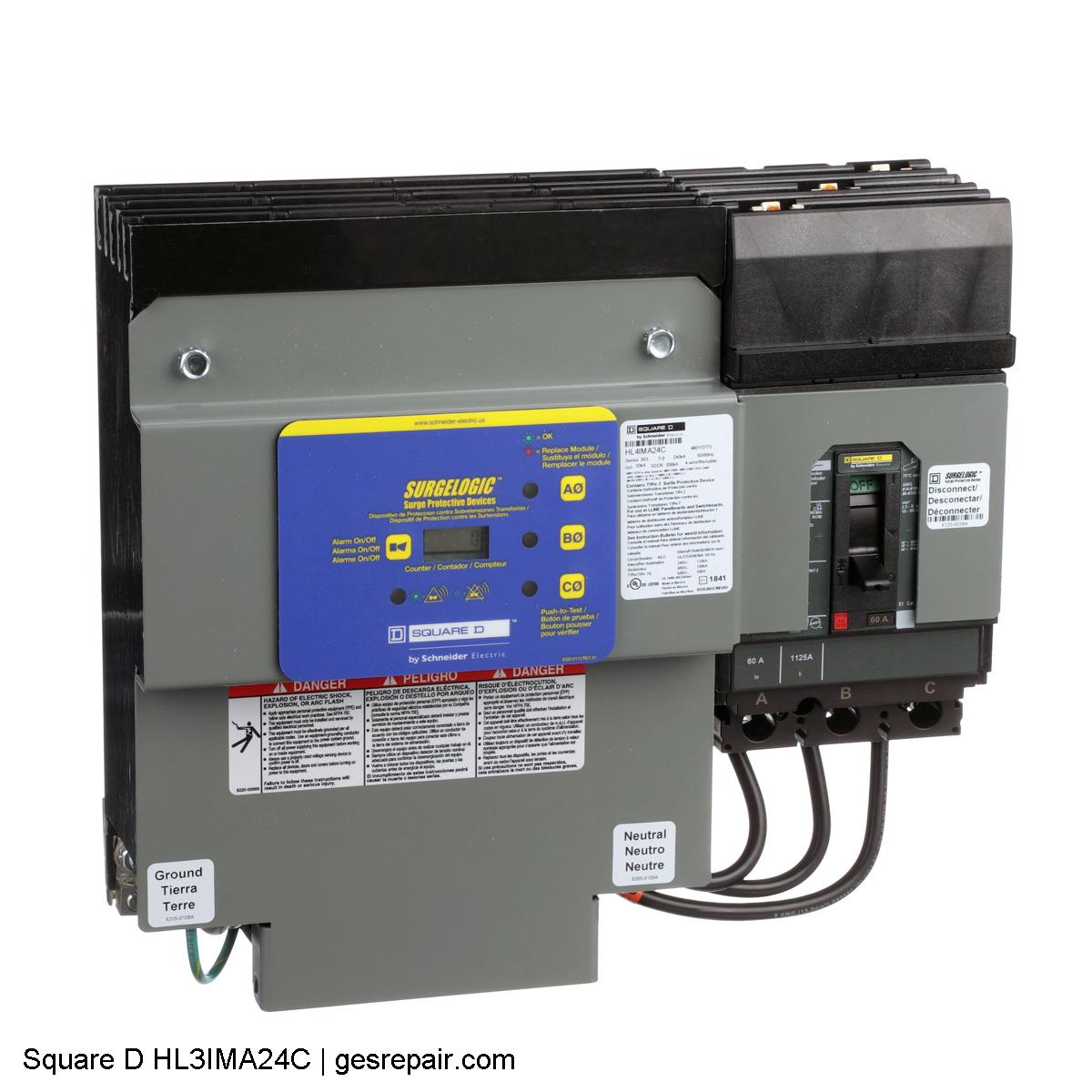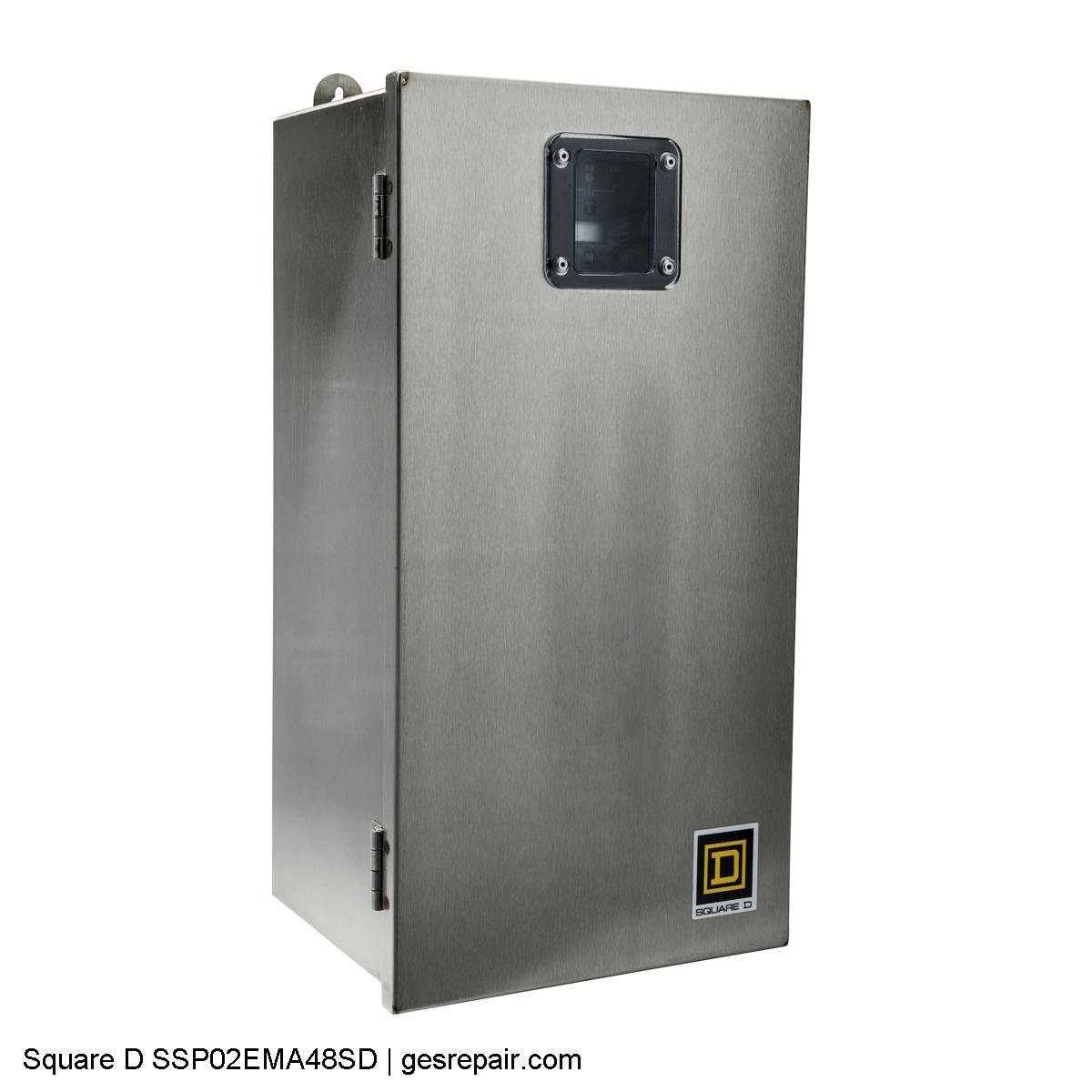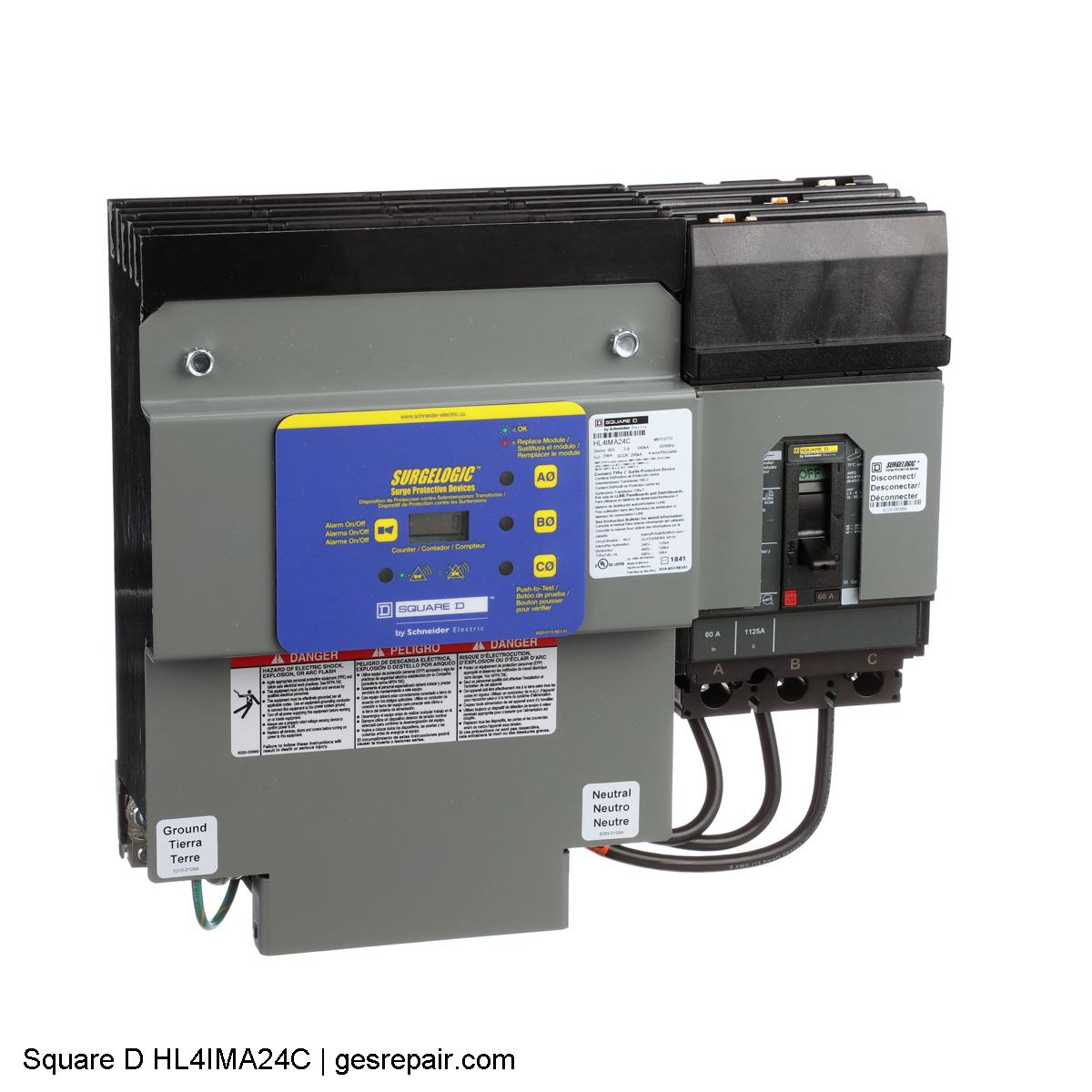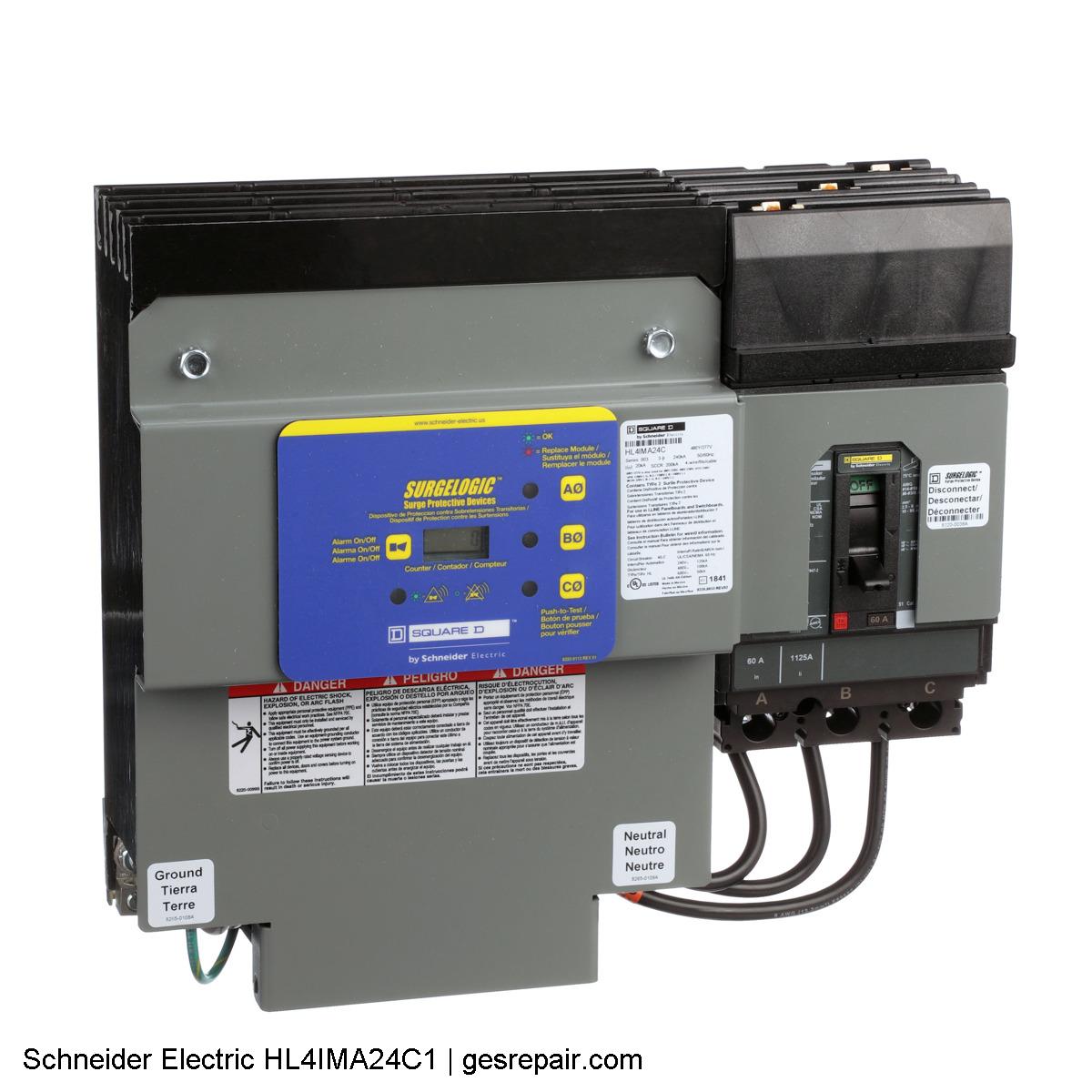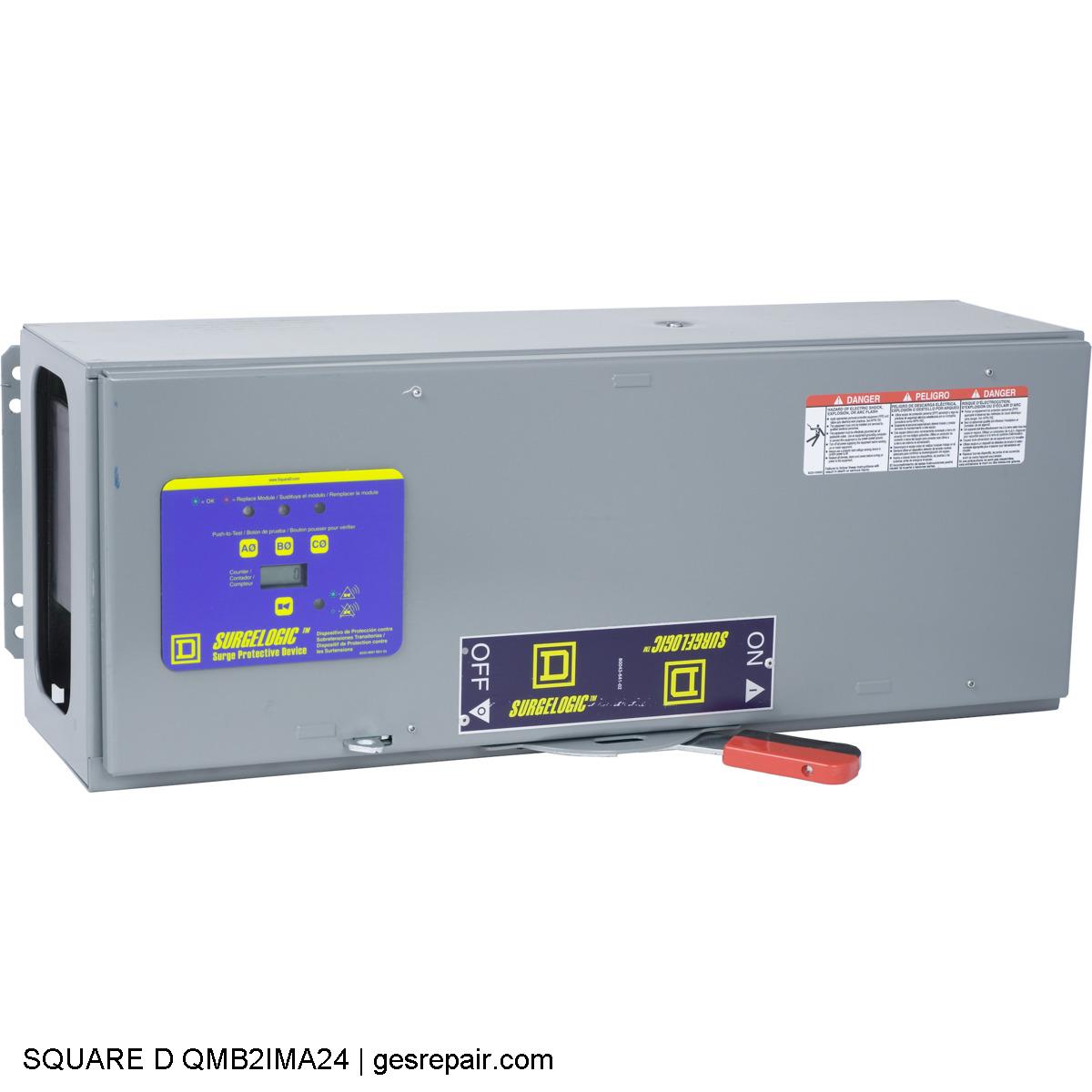Surge Suppressors
A surge suppressor is a component that inserts into an electronic device’s alternating current (AC) utility line or telephone line to prevent damage caused by voltage spikes called transients. While some people use the terms surge suppressors and surge protectors interchangeably, there are some differences.
Surge protectors shut electrical equipment down upon detecting a transient. In contrast, surge suppressors regulate the voltage and allow the device to run, making the power flow constant when a spike occurs.
-
SQUARE D
SQUARE D HL3IMA24C Surge protection device, Surgelogic, HL, 240kA, 240
- Model #:
- HL3IMA24C
- Part #:
- HL3IMA24C
- New/Surplus $ 25809
- Refurb. Price $18066 Save up to $ 7743
- Repair Price $12905 Save up to $ 12904
-
SQUARE D
SQUARE D SSP02EMA48SD Surge Arrestors
- Model #:
- SSP02EMA48SD
- Part #:
- SSP02EMA48SD
- New/Surplus $ 19047
- Refurb. Price $13333 Save up to $ 5714
- Repair Price $9524 Save up to $ 9523
-
SQUARE D
SQUARE D HL4IMA24C Surge protection device, Surgelogic, HL, 240kA, 480Y
- Model #:
- HL4IMA24C
- Part #:
- HL4IMA24C
- New/Surplus $ 17928
- Refurb. Price $12550 Save up to $ 5378
- Repair Price $8964 Save up to $ 8964
-
SQUARE D
SQUARE D HL4IMA24C1 Surge Protection Devices and Accessories
- Model #:
- HL4IMA24C1
- Part #:
- HL4IMA24C1
- New/Surplus $ 17928
- Refurb. Price $12550 Save up to $ 5378
- Repair Price $8964 Save up to $ 8964
-
SQUARE D
SQUARE D QMB2IMA24 Surge Protection Devices and Accessories
- Model #:
- QMB2IMA24
- Part #:
- QMB2IMA24
- New/Surplus $ 17931
- Refurb. Price $12552 Save up to $ 5379
- Repair Price $8966 Save up to $ 8965
-
SQUARE D
SQUARE D SSP04EMA48D Surge Arrestors
- Model #:
- SSP04EMA48D
- Part #:
- SSP04EMA48D
- New/Surplus $ 17625
- Refurb. Price $12338 Save up to $ 5287
- Repair Price $8813 Save up to $ 8812
How Surge Suppressors Work
Surges refer to the rise in current or voltage in an electrical circuit. Surge classification typically involves a rating greater than 2000 volts or 100 amperes. A surge’s rise time can range anywhere from one to 10 microseconds.
Spikes refer to a sudden increase in energy that lasts less than one millisecond.
If a surge happens within a device protected by a suppressor, the suppressor returns the voltage to its optimal point, avoiding an overcurrent. Suppressors perform this by routing the excess power into a circuit grounding wire or outlet.
Surges are one of the most common issues with power supplies. They can result from various activities, including:
- – Power overloads.
- – Equipment failure.
- – Power outages.
- – Lightning.
- – Electric noise.
- – Defective wiring.
Without adequate protection, these factors can lead to significant damages, like data loss, equipment failure and considerable downtime.
Types of Industrial Surge Suppressors
Surge suppressors can use various types of systems and technologies to operate effectively, such as:
- – Metal oxide varistors (MOV): MOVs are non-linear, bidirectional devices that can regulate voltage for a broad range of general-purpose, light-duty applications. These devices can conduct both polarities of a standard AC power cycle. They are among the most economical options for applications that need protection during short pulses.
- – Avalanche diodes: These suppressors are ideal for medium-duty applications involving data systems and static protectors. Avalanche diodes can break down higher voltages than most MOVs.
- – Thyristor diodes: These devices use semiconductor chips to regulate voltage in heavier-duty applications like telecom. Thyristor diodes can handle repeated high voltage surges.
- – Gas tubes: Also known as discharge tubes, gas tubes have slightly slower response times than MOVs, thyristor or avalanche diodes. However, they can protect against extremely high voltage surges.
Surge suppressors are typical for commercial and residential uses and are ideal for protecting computers, telecommunication devices, telephone lines and power lines.
When choosing the appropriate surge suppressor for a specific device, some factors to consider are:
- – Determining the application’s surge requirement.
- – Knowing the device’s operating and maximum peak voltage.
- – Determining whether there are any specific temperature requirements.
- – Considering the maximum clamping voltage the device can tolerate.
Trusting Global Electronic Services With Your Surge Suppressor Needs
At Global Electronic Services, we offer a broad range of new and reconditioned surge suppressors and parts for the needs of almost any application. We also provide comprehensive testing and repair services for various types of industrial equipment, including surge suppressors. A secure customer repair portal allows your company to track the repair process from the initial evaluation to the parts requirements to completion.
Call us at 877-249-1701 or contact us online today to request a quote and learn more about how our products and services can benefit your company.

